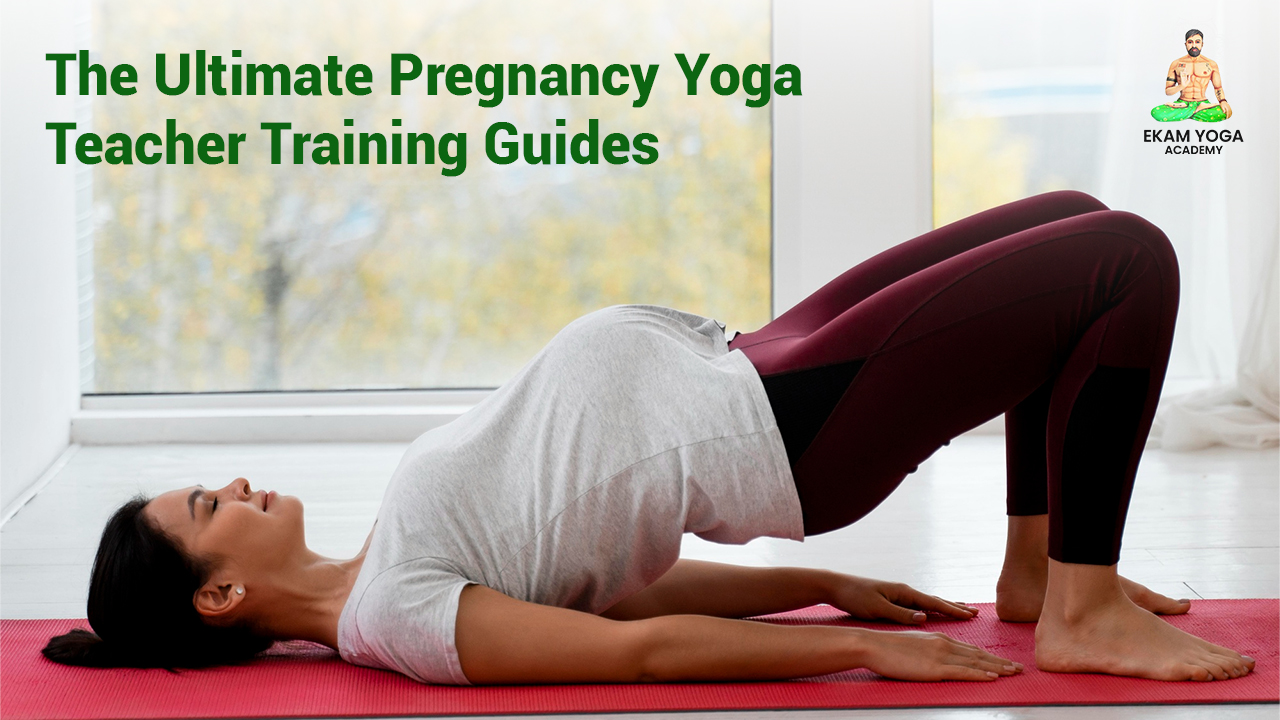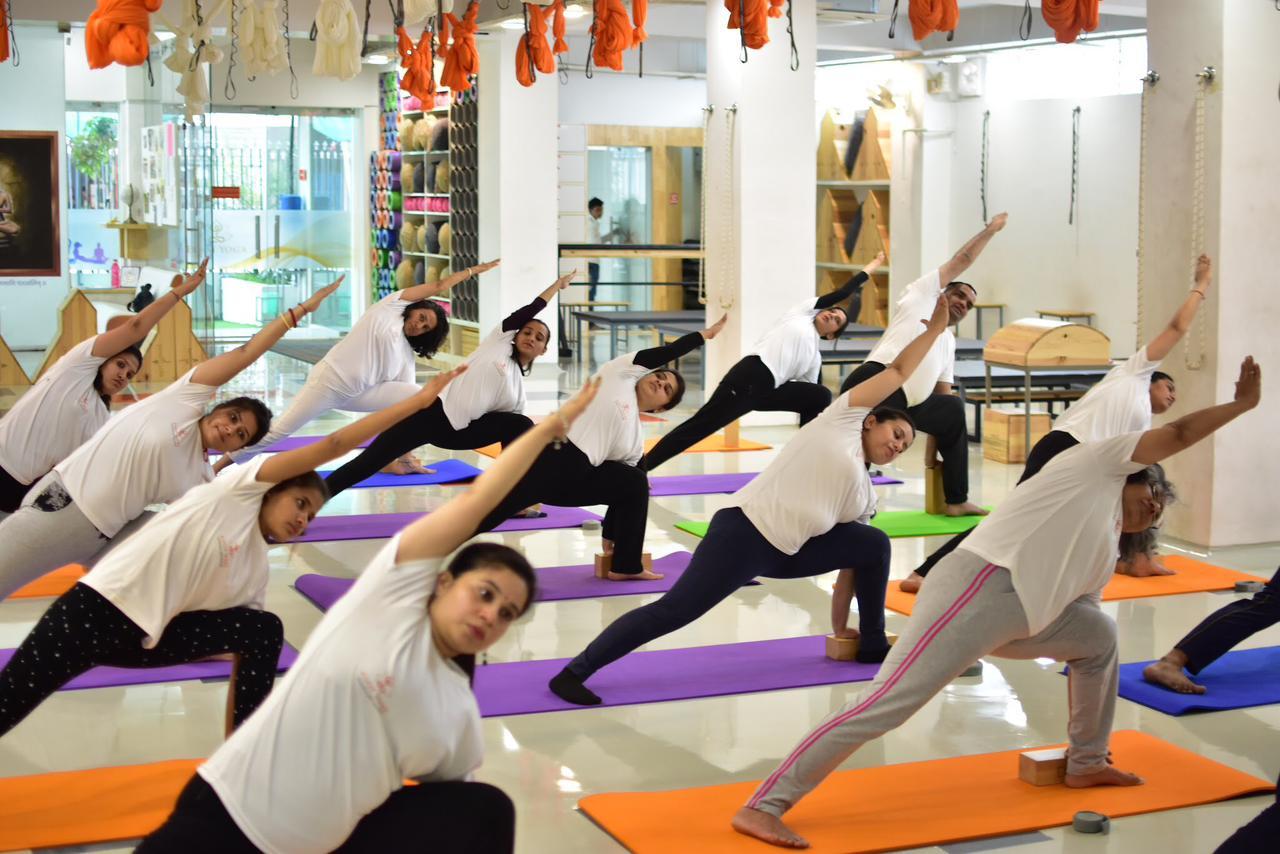Pregnancy is a time of great physical and emotional change for women. For yoga practitioners, this presents a unique opportunity to offer support and guidance to expectant mothers through the practice of prenatal yoga. As a yoga teacher, it's important to have a strong foundation in both traditional yoga practices and specialized knowledge of the unique needs of pregnant women.
In this article, we'll explore the essentials of pregnancy yoga teacher training, including the benefits of prenatal yoga, the skills and knowledge required to teach it safely and effectively, and some useful tips for preparing to teach prenatal yoga.
What can you expect from a Pre-/Postnatal Class?
Prenatal and postnatal yoga classes are designed to support women throughout the journey of pregnancy, childbirth, and motherhood. These specialized classes can offer a range of benefits for expectant and new mothers, including physical and emotional support, stress reduction, and preparation for childbirth and postpartum recovery.
During a prenatal yoga class, expectant mothers can expect to practice gentle yoga poses that are specifically designed to support the changing needs of their bodies during pregnancy. These poses may focus on strengthening and stretching the muscles used during childbirth, improving circulation and reducing swelling, and relieving common pregnancy-related discomforts such as back pain and nausea.
In addition to the physical benefits, prenatal yoga classes can also offer emotional and mental support for expectant mothers. Many women experience stress, anxiety, and other emotional challenges during pregnancy, and prenatal yoga can provide a safe and supportive space to connect with others, reduce stress, and cultivate inner peace and relaxation.
Postnatal yoga classes are designed to support women in the postpartum period, as they recover from childbirth and adjust to life as new mothers. These classes typically focus on gentle, restorative yoga poses that help to strengthen and tone the pelvic floor, abdominal muscles, and other areas of the body that may have been affected by childbirth.
Understanding the Unique Needs of Pregnant Women
-
Physical changes: Pregnancy can cause a variety of physical changes, including changes in posture, balance, and flexibility. Pregnant women may experience back pain, hip pain, and other discomforts that can affect their ability to practice yoga. It is important to modify yoga postures and sequences to accommodate these changes and avoid putting undue stress on the body.
-
Emotional changes: Pregnancy can also bring about emotional changes, such as mood swings, anxiety, and depression. A yoga practice can help support emotional wellbeing during pregnancy by providing a safe and nurturing space for students to connect with their bodies and breath.
-
Safety considerations: Safety is a top priority when working with pregnant students. It is important to avoid certain yoga postures and practices that could be harmful to the mother or baby, such as inversions, deep twists, and strenuous abdominal work. Additionally, it is important to be aware of any pregnancy-related complications or health concerns that may require modifications or adjustments to the practice.
-
Modifications and props: To accommodate the physical changes of pregnancy and ensure a safe and comfortable practice, modifications and props can be helpful. For example, using blocks or bolsters for support in seated or standing postures can help maintain balance and stability. Modifications may also be needed for students in different stages of pregnancy or with different levels of experience.
-
Breathwork: Breathing exercises, or pranayama, can be particularly beneficial for pregnant students. Controlled breathing techniques can help regulate the nervous system, reduce stress and anxiety, and promote relaxation and calm.
What you should consider before a Pregnancy Yoga Teacher Training
-
Your own experience with pregnancy and childbirth: While it's not necessary to have personal experience with pregnancy and childbirth to become a pregnancy yoga teacher, it can be helpful in understanding the experiences of your students. Consider how your own experiences may inform your teaching and approach to working with expectant and new mothers.
-
Your yoga experience and training: To become a pregnancy yoga teacher, you should have a solid foundation in yoga practice and principles, as well as a recognized yoga teacher training certification. Consider whether you have the necessary experience and training to specialize in pregnancy yoga, and whether you may need additional training or education in this area.
-
The reputation and credentials of the training program: It's important to choose a training program that is reputable and well-respected within the yoga community, with experienced and knowledgeable instructors who specialize in pregnancy yoga. Look for programs that are accredited by recognized yoga organizations, and read reviews and testimonials from previous students to ensure that the program meets your needs and expectations.
-
The curriculum and content of the training program: Consider the specific topics and areas of focus covered in the training program, such as prenatal and postnatal anatomy and physiology, modifications and adjustments for yoga poses during pregnancy, and techniques for teaching breathing and relaxation practices. Make sure that the training program covers the topics and skills that you need to become a successful pregnancy yoga teacher.
-
Your personal goals and intentions: Finally, consider your own goals and intentions for becoming a pregnancy yoga teacher, and whether this is the right path for you. Are you passionate about supporting expectant and new mothers, and helping them to have positive and empowering experiences during pregnancy and childbirth? Do you feel called to share the benefits of yoga with this population? By considering your personal motivations and intentions, you can ensure that you are embarking on this journey for the right reasons, and with a clear sense of purpose and direction.

Why do a Pregnancy Yoga Teacher Training?
-
To specialize in a specific area of yoga teaching: Pregnancy yoga teacher training programs offer a unique opportunity to specialize in a specific area of yoga teaching, and to develop expertise in working with expectant and new mothers. By completing a training program, yoga teachers can expand their skills and knowledge, and differentiate themselves within the competitive yoga teaching market.
-
To support the needs of expectant and new mothers: Pregnancy yoga teacher training programs provide the knowledge and skills necessary to support the unique needs and challenges of expectant and new mothers. By completing a training program, yoga teachers can offer a safe and nurturing space for pregnant women to practice yoga, and help new mothers to recover from childbirth and adjust to life with a new baby.
-
To promote health and wellness during pregnancy and postpartum: Yoga practice has been shown to offer a range of benefits for pregnant women, including improved physical health, reduced stress and anxiety, and increased emotional and mental wellbeing. By completing a pregnancy yoga teacher training program, yoga teachers can help to promote the health and wellness of expectant and new mothers, and contribute to positive birth outcomes and postpartum recovery.
-
To build a community of support and connection: Finally, pregnancy yoga teacher training programs offer the opportunity to build a community of support and connection with other yoga teachers, as well as with expectant and new mothers. By completing a training program, yoga teachers can connect with others who share their passion and dedication to supporting women during the journey of pregnancy, childbirth, and motherhood, and build relationships that last a lifetime.
When should I do it?
The best time to do a pregnancy yoga teacher training program will depend on your individual circumstances and goals. the decision of when to enroll in a pregnancy yoga teacher training program will depend on your individual circumstances and priorities. Consider your goals, needs, and resources carefully, and choose a program that aligns with your values and aspirations.
Where should I do it?
-
Look for a reputable training program
-
Consider the location
-
Check the schedule
-
Look for a supportive community
-
Consider your personal preferences
Ultimately, the location of your pregnancy yoga teacher training program will depend on your individual needs and priorities. Do your research, consider your options carefully, and choose a program that aligns with your goals and aspirations.
What level of investment can I make?
The level of investment required for a pregnancy yoga teacher training program can vary depending on the program and location. Some programs may be more expensive due to factors such as the length of the program, the level of certification, and the reputation of the training provider.
When considering the level of investment, you are willing and able to make, it can be helpful to research and compare different programs. Look for programs that are accredited and recognized in the yoga community, and consider the reputation and experience of the training provider.





0 Comments
Write a comment